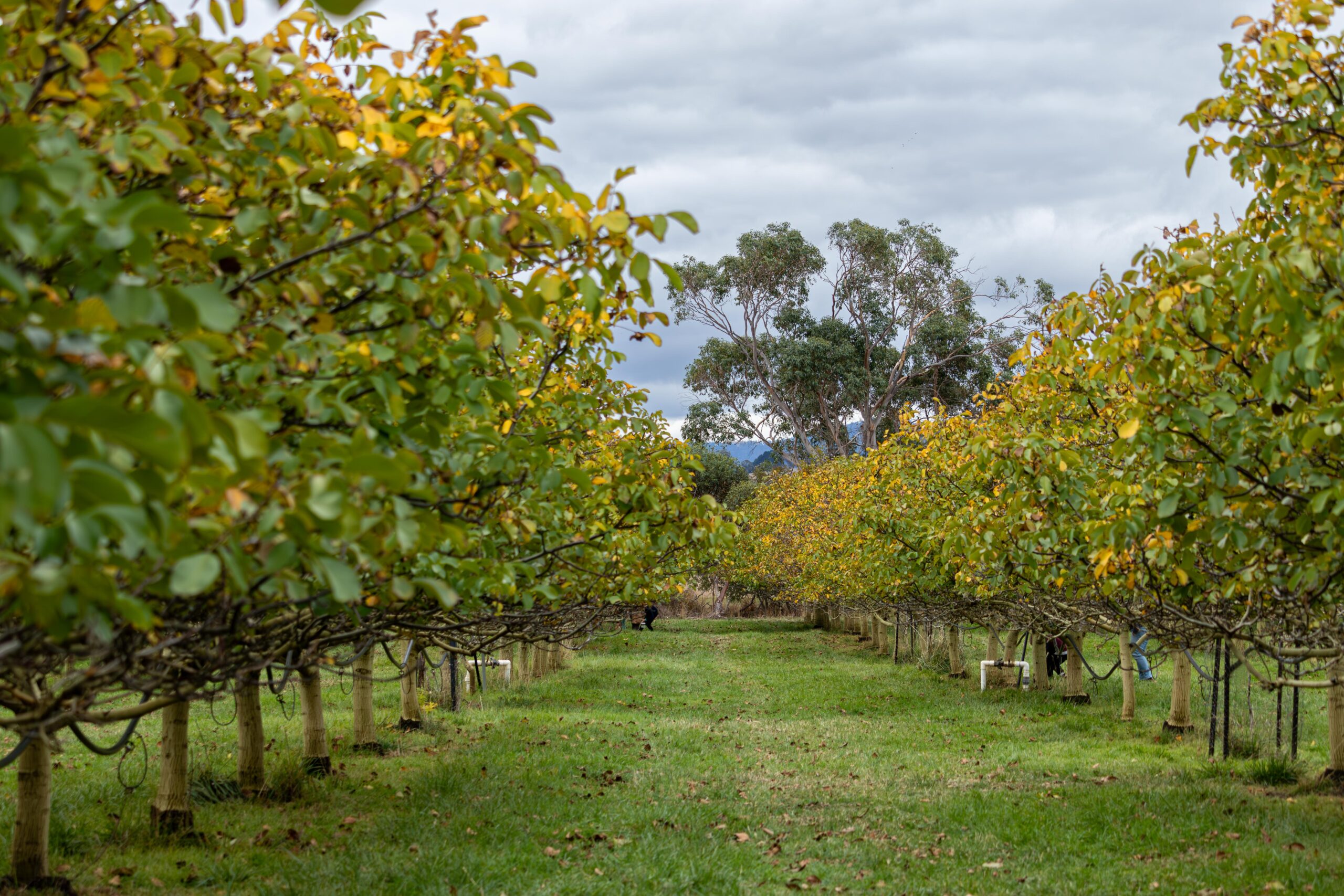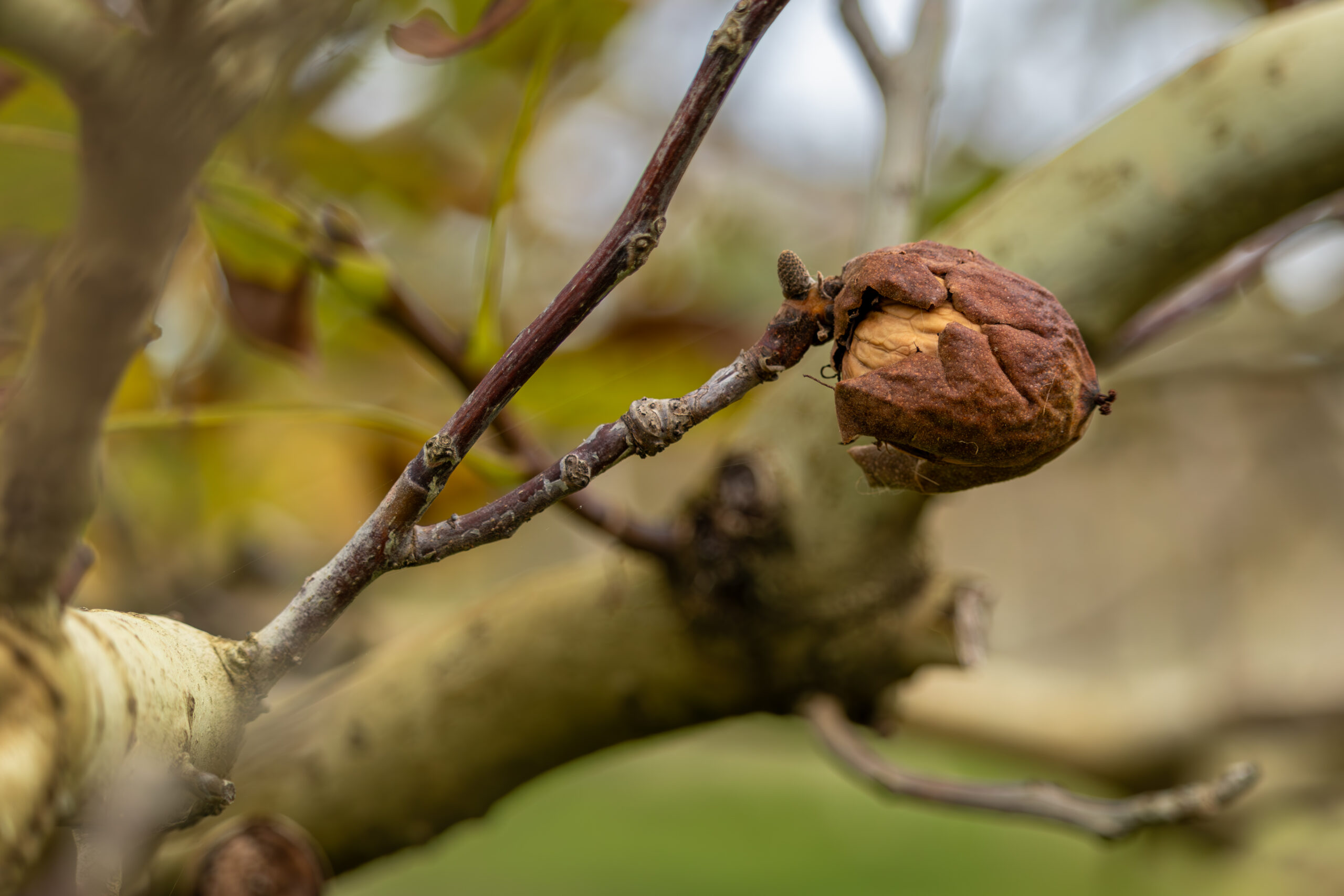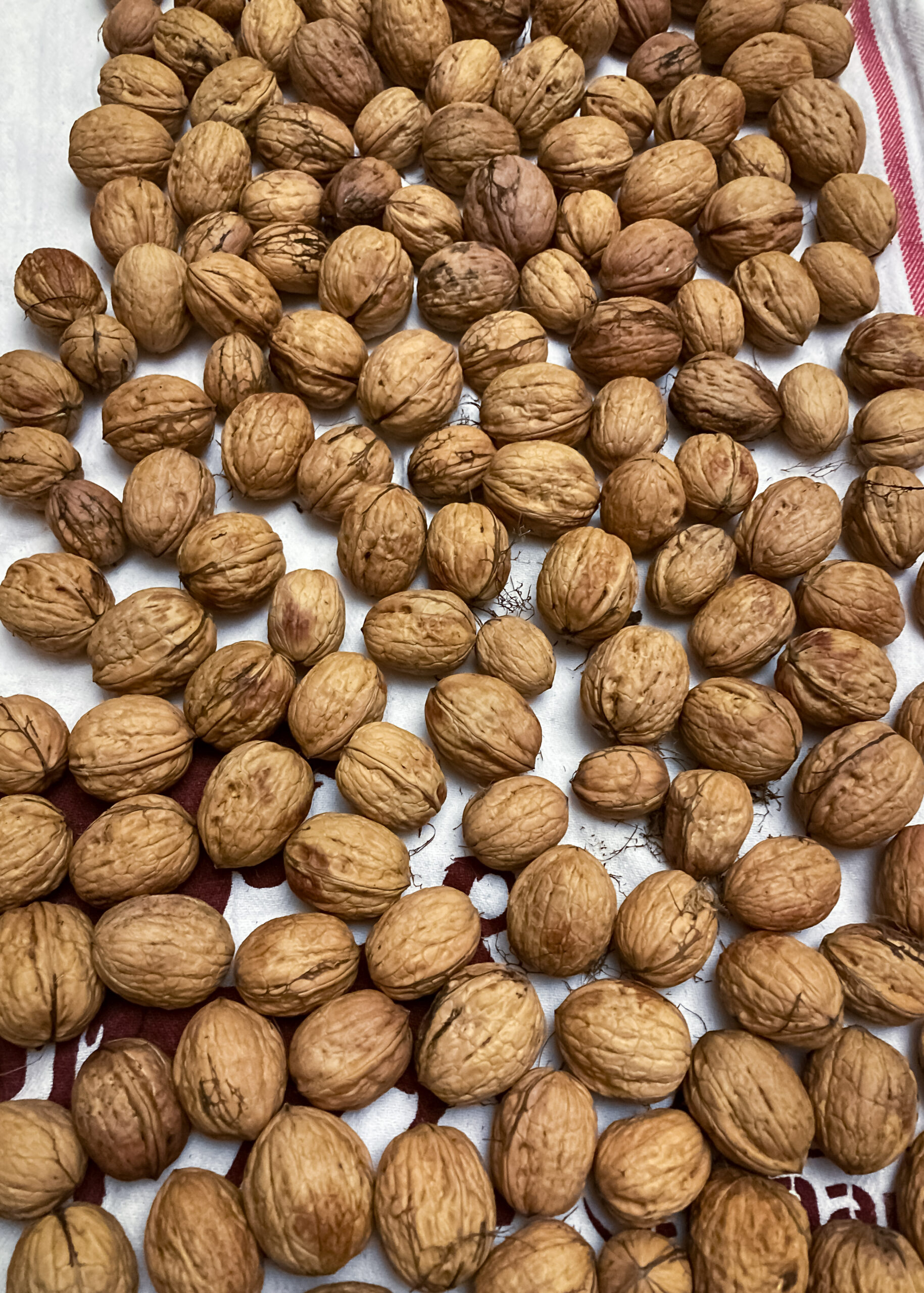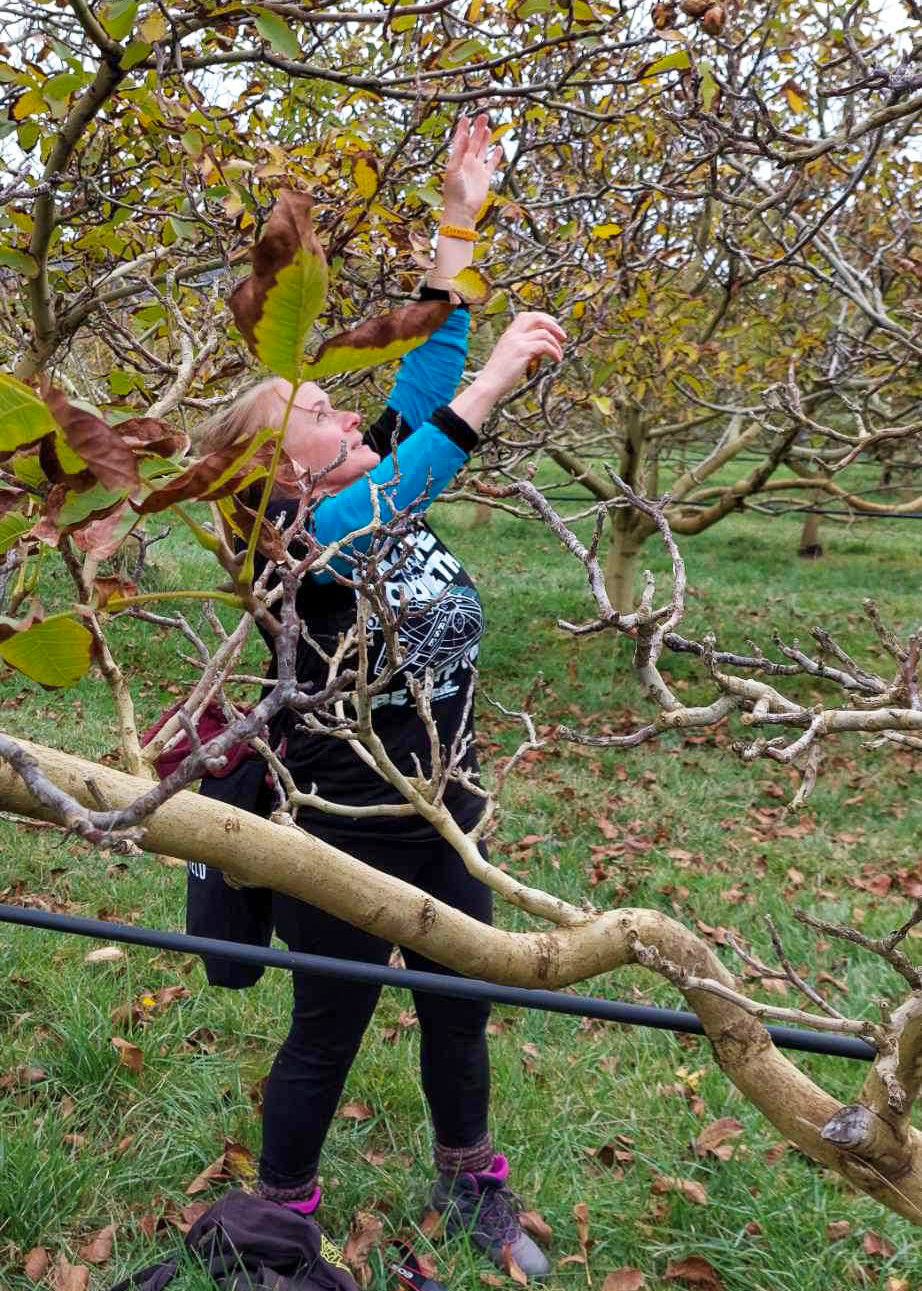Week 18/2024: Walnuts and climate wars
Week of 22 April 2024
Walnuts and climate wars
As well as walnuts and climate wars, which I’ll get to in a bit, this was an entertaining week. Slabs and I went to see Dawn French is a Huge Twat at Wrest Point and Kramstable went to Melbourne with his performing arts class from college.

The Australian Climate Case
This week I became aware of the Australian Climate Case.
This case was filed in the federal court in October 2021 and I’m surprised there hasn’t been more coverage of it. However, relevant court documents are progressively being published online.
What is the case?
The lead plaintiffs in the case are Torres Strait community leaders Uncle Pabai Pabai and Uncle Paul Kabai from the islands of Boigu and Saibai.
They’re seeking orders from the court that the Australian government has a duty of care to the Torres Strait Islanders to protect them from current and projected impacts of climate change, and that that the government has breached this duty of care. They are also seeking an injunction to force the government to take measures to protect this land and avoid harm to its people.
This is modelled on a recent case in The Netherlands where the Urgenda Foundation succeeded in a court action against the Dutch government.
That case was the first to establish that a government has a duty of care to protect people from climate harm. The court ordered the Dutch government to significantly reduce the Netherlands’ greenhouse gas emissions within five years.
As a result of the groundbreaking case, the Netherlands now has some of the strongest climate policies in the world. It is closing coal-fired power stations and investing billions in renewable energy and energy efficiency. People in Belgium, Colombia, France, Germany and Ireland have also had success in the courts, and there are similar cases under way in other countries. (From https://australianclimatecase.org.au/the-case/)
Back in 2020, a group of teenagers brought an unsuccessful duty of care claim against the then environment minister Sussan Ley. But this is the first time anyone in Australia has claimed that the entire government has a duty to protect its citizens from harm from climate change.
It seems reasonable, right? Governments should protect their citizens?
Reports out of the court case this week suggest the government believes otherwise.
What happened this week
A summary of the Commonwealth’s week in court was that it was “trying to dodge Australia’s climate responsibility, hurtful attempts to dismiss First Nations lived experience and deep knowledge of country, and downplaying the irreplaceable loss of homelands and culture”.
One of the claims reported was that the government can’t reduce emissions targets consistent with science because this would require “extreme measures”.

Now I don’t know the context of this, but “extreme” is a relative term. I would suggest the discomfort everyone might have to put up with to do what’s necessary to bring down emissions wouldn’t rank on the same scale as having your homeland drowned by rising seas (or be wiped out by increasingly more likely bushfires, floods and cyclones . . .)
It goes without saying that the longer we wait to take measures the more extreme they will need to be. A carbon tax was too extreme once, remember? The government can’t say it wasn’t aware. Scientists have been telling everyone for years. Decades.
And the government also reportedly claimed that it doesn’t have a duty of care because the people in the Torres Strait should be taking their own measures to protect themselves from rising sea levels.

Right.
It will be interesting to see the outcome but in the mean time you can sign up here.
Week 18 summary
Habit tracker
- 9.30 shutdown: 5/7 days
- 8,000 steps: 7/7 days
What was the best thing about this week?
Last year our friend Lizzie invited me and Lil Sis to go along with her to Coaldale Walnuts open day.
I wrote about it here, but in summary, the lovely team at Coaldale hold an open farm day in May. After the harvest is complete, there are usually walnuts still in the trees and on the ground that got missed, so people can come in for a few hours and find them.
Last year was a lot of fun, though I spent more time taking photos than I did looking for walnuts, and I ended up with a grand total of 31 nuts.
When you get them home, you’re supposed to dry them out for a week or so (testing after that to see if they’re ready) and then store them in a cool place. Note this says dry them for a week. Not a year, which is what I did. My 31 walnuts hadn’t moved from the dining table since I brought them home last time . . .
They are now in bowls.

This year’s walnut expedition
Moving right along, we headed to Richmond on Saturday afternoon armed with sticks and ambitiously large receptacles. (The sticks were so we could reach the nuts lingering near the top of the trees. Last year we’d had to improvise with long pointy things we found on the ground.)
It was the same deal as last year. You weigh your receptacle then you go out to the orchard and gather all the walnuts you can find within your three-hour timeslot.

It was loads of fun and there were a lot more walnuts lying around a lot more than there had been last year.

My goal was to get more than I got last year, which wasn’t hard.

It was also great to spend time away from a computer and a desk and let my sore shoulder do some work. It felt really good afterwards.

What did I notice this week?
The changes in kunanyi in just over an hour.

Autumn trees outside the back of Artery in Victoria Street.

What did I learn this week?
After trying to find out where Tooma was for my last travel blog, I got interested in the other places that had been considered for the location of Australia’s capital city.
I imagined there had been a long list of candidates and they’d been eliminated one at a time much in the same way that contestants on Survivor are voted out by the remaining tribe members. And that the final vote would have come down to the final two, with everyone getting a say on who would be the ultimate survivor. Or capital in this case.
Disappointingly, it doesn’t seem like this was actually what happened.
A cold climate capital
The National Capital Authority explains that under the Constitution, the site for the capital had to be at least 100 miles from Sydney. And it had to be somewhere cold because King O’Malley, member of the first federal parliament, convinced everyone that ‘cold climates have produced the greatest geniuses’.
I know what you’re thinking. Why didn’t they choose Launceston and be done with it?
Imagine the north-south rivalry then. Hobart’s the capital of Tasmania but Launceston is the capital of Australia. Where would we put the stadium?
Anyway, backed by the cold climate theory, O’Malley advocated for the capital to be in the Snowy Mountains, which is where Tooma’s nomination must have come from, along with more than 60 other country NSW centres. They were suggested because of their “bracing climate, the purity of their water supplies or an abundance of stone and timber for building”. Sites too far south, around Albury, were too close to Melbourne and sites too far north like Armidale and Tamworth were too close to Sydney.
In 1902’s winter, the politicians went on a magical mystery tour of the sites and found out how freezing the mountains were. After that they voted. The Senate opted for Bombala after the House of Representatives had chosen Tumut (after SIX votes). (I don’t know where the story of Tooma being the next to last choice came from, but clearly one must not believe everything one reads on the internet.)
Bombala. Tumut. Stalemate.
In the next vote they all agreed on Dalgety, which is further inland than Bombala. But the NSW government was having none of this and wanted something closer to Sydney.
Politicians, right?
And how we ended up with Canberra
The final compromise was the Yass-Canberra region, almost exactly 100 miles from Sydney. It also met the criterion of an ‘invigorating’ climate. NSW supported this, and provided land on the coast at Jervis Bay for the capital’s seaport. In 1908 Parliament passed the necessary legislation, and off the surveyors went to find the exact location.
Hooray! Canberra, here we come.
Geoffrey Sherrington’s 1969 PhD thesis at the University of NSW gives an account of the entire ordeal, which overall took nine years to sort out.
What am I reading?
- The Happiness Trap by Russ Harris
- Queer : a graphic history by Meg-John Barker and Julia Scheele
- Undertow by Kim Bambook